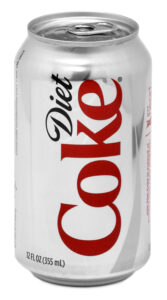
Let’s dispel one myth right here: not every breakup is forever.
The previous employee who departed for “a new challenge”? They could very well be the ideal candidate– again.
Welcome to the era of the boomerang hire—the increasing practice of rehiring former employees who departed from your business and (gasp!) wish to return.
It isn’t lazy—it’s deliberate and strategic.
No matter if you’re a manager considering hiring back that best former performer, or a professional trying to discern whether to re-spark your corporate romance, here’s what you need to understand about boomerang hiring in today’s hiring landscape—and why this practice is rewriting hiring playbooks in industries.
The Statistics Behind the Boomerang Bounce
Boomerang hiring isn’t a one-time anomaly; it’s a full-fledged movement. In a Workplace Trends/UKG study, a stunning 15% of total recent hires are boomerangs. More indicative? 76% of HR pros report they’re more inclined to hire back former employees than they would have a decade earlier.
Some other eyebrow-raising stats:
- 40% report they would return to a previous employer (LinkedIn Workforce Insights).
- Rehires usually earn 10–20% greater compensation than they had when they departed (Harvard Business Review).
- Boomerangs hire up to 30–50% more rapidly than brand new personnel (Cornell ILR School).
In brief: this is not a step backward. It’s a step forward—smarter, quicker, and with fewer regrets in hiring.
The Boomerang Trend: Why It is Picking Up Steam
Boomerang hiring is on the rise for a number of reasons:
1. Familiarization in a Volatile Marketplace
In the current talent pool, hiring is a risk. Cultural fit, teachability, and non-cognitive skills tend to be as important, if not more so, as sheer credentials. By rehiring a person who already knows your systems, values, and mayhem—um, culture—you diminish dramatically the margin for failure.
2. The Great Resignation (and Regret)
Millions resigned in the Great Resignation, believing that the grass was greener elsewhere. It turns out, it wasn’t. And that wasn’t the only reason for leaving. Much of it was simply for growth or new opportunities.
A 2023 Muse survey reported that a stunning 72% of job switchers felt “surprised or regretful” in their new jobs. Many began looking back at those previous positions with a fresh eye—and coming back.
3. It’s Cheaper. Period
Hiring, onboarding, and training a new candidate can take up to $4,700, as estimated by SHRM. With a boomerang hire, you’re skipping a large part of that routine. They’re already familiar with the ropes—and the coffee machine.
The Employer Playbook: Managing Exits (When You Want Re-Entrants)
Boomerang hiring won’t be successful if you burn bridges as you leave. Increasingly, companies recognize that offboarding is the new onboarding. How you leave may be the determining factor in whether that door is ever opened again.
Here’s what smart employers are doing to entice ex-employees:
–Provide support, not merely severance. Resume coaching, LinkedIn endorsements, and networking assist in making a lasting impression.
–Establish alumni networks. Consider corporate LinkedIn groups, alumni newsletters, and regular updates. Reframe former employees as future partners, clients, or referrals—because they are. Genius.
– Exit with dignity. Refrain from blame, bitterness, or ghosting. A polite farewell leaves the door open and inviting for a possible return.
Remember that they didn’t leave just so they could burn the building down. Sometimes they wanted to experience something different. Sometimes they needed a break. Sometimes they realized later that your office cold brew was the best in town.
Why Boomerang Employees Are a Secret Weapon
Rehiring a past employee is a perfect combination of value, efficiency, and loyalty. It is like having a pre-owned car with a full-service record and every upgrade.
The Top Advantages:
✅ Faster Onboarding
They already understand your systems, equipment, and internal politics (let’s be honest). This results in less time spent in training and a greater time in making things happen. Research indicates that boomerangs accelerate up to 50% faster compared to outside candidate hires.
✅ Culture Fit Guaranteed
They’ve been there. They’ve succeeded. There’s no guesswork as to whether they’ll fit in with the team—or take offense at your Slack memes.
New Perspective + Knowing It Well
They come back with experience from other companies, fresh skills, and a new perspective—but with a knowledge of your organization’s idiosyncrasies. It’s the ideal balance of “been there” and “leveled up.”
✅ Reduced Risk
This does not qualify as a blind date. You already know their weaknesses, their resilience, and if they fill up the office coffee. That is less risk in rehiring them compared to a shiny resume with a past that is unknown.
✅ Higher Retention
Surprise twist: boomerang employees remain longer than brand new ones. Why? Because they’ve experienced the alternative and decided to return.
Shall You Recruit Every Past Employee? (Nope…Not at All.)
Let’s not idealize. Exits had to occur. Not every exiting staff member must be brought back. What is important is to be selective:
Ask yourself:
Did they leave professionally and respectfully?
Were they a top performer or cultural enhancer?
Did they acquire additional skills or experience that make them even stronger?
Do they really desire to return for the correct reasons?
And workers—if you’re looking to come back:
-Do not suppose you can resume exactly where you stopped.
-Be explicit about what has changed (you and the business).
-Bring humility, not entitlement, and curiosity.
The Future is Flexible—and Circular Boomerang hiring is evidence that the linear career path is dead.
The career spiral is here, and coming back to a previous employer is not a step in reverse—it’s a jump forward.
The greatest companies treat talent as relationships, not as a transaction. They’re making investments in the entire employee lifecycle, from onboarding, through to exit, to alumni, to rehire. And the wisest professionals? They’re leaving doors ajar, reputations intact, and relationships preserved. You never know when the greatest next step is a return.
Need assistance with positioning yourself as a top boomerang hire—or building a resume that brings your previous (and future) dream job? Let’s discuss. I assist executives and professionals in becoming the clear choice—once again.













